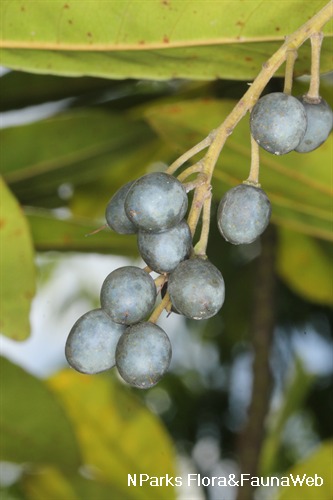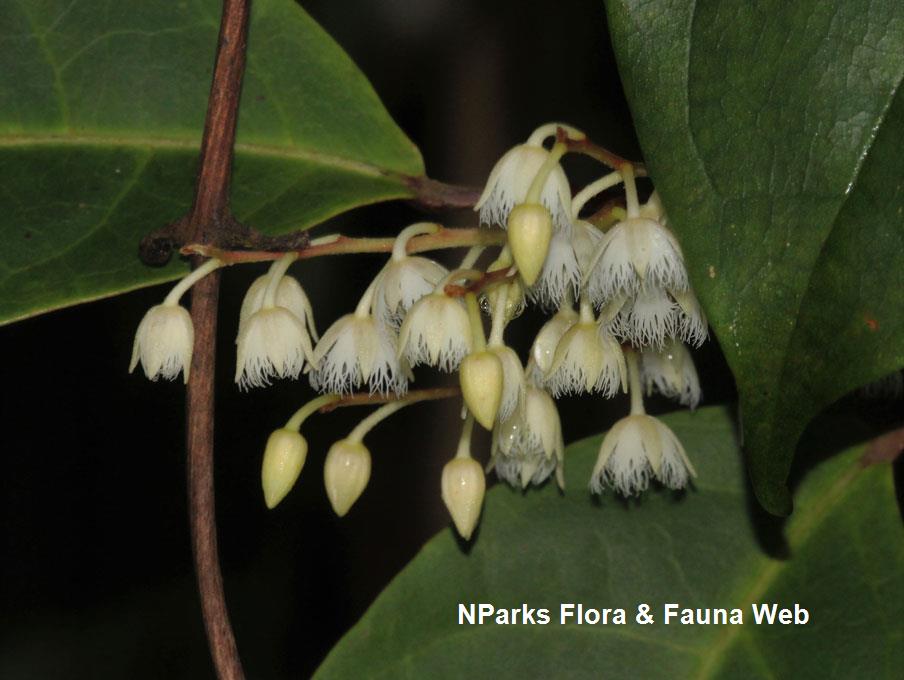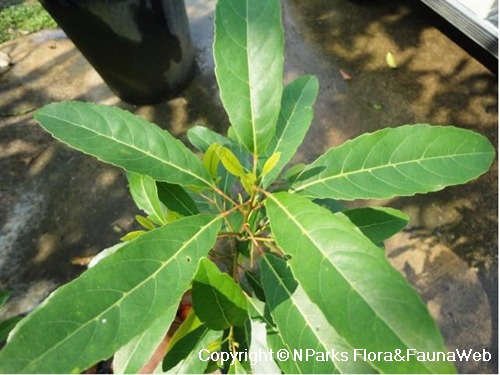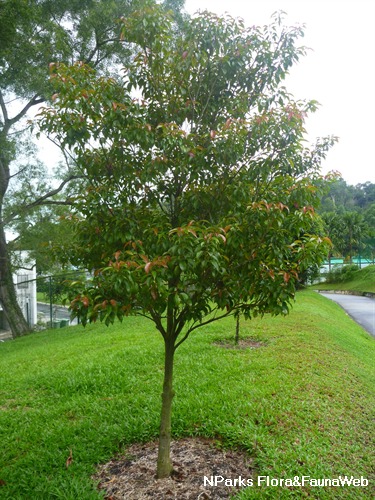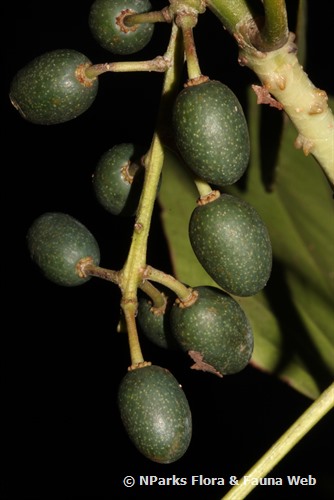
Back
Elaeocarpus petiolatus (Jacq.) Wall.
| Family Name: | Elaeocarpaceae |
| Common Name: | Broad-leaved Oil Fruit, Derumun Babi, Derumun Babi Hitam, Hempedu Ular, Kayu Sepuh, Medang, Medang Kelawar, Medang Keli, Medang Manih, Medang Musang, Medang Pipi Lokan, Medang Tanjung, Paruh-Paruh, 长柄杜英 |
Name
Classifications and Characteristics
| Plant Division | Angiosperms (Flowering Seed Plants) (Dicotyledon) |
|---|---|
| Plant Growth Form | Tree (Medium (16m-30m)) |
| Lifespan (in Singapore) | Perennial |
| Mode of Nutrition | Autotrophic |
| Plant Shape | Irregular |
| Maximum Height | 21 m |
Biogeography
| Native Distribution | Southern China, India, Myanmar, Indochina, Thailand, Malaysia, Singapore, and Indonesia |
|---|---|
| Native Habitat | Terrestrial (Primary Rainforest, Secondary Rainforest) |
| Preferred Climate Zone | Tropical, Sub-Tropical / Monsoonal |
| Local Conservation Status | Native to Singapore (Least Concern (LC)) |
Description and Ethnobotany
| Growth Form | It is a tree up to 21 m tall, and up to 1.2 m in girth size, with resin covering the tips of its twigs. |
|---|---|
| Foliage | Its spirally arranged, long-stalked leaves have leathery leaf blades that are oblong or elliptic, tipped, green, and 7–31 by 3.8–18 cm. |
| Flowers | Its flowers develop on flowering shoots (inflorescences) of 3–13 that occur in the leaf axils. Its white flowers are 1.3 cm across. |
| Fruit | Its fruits are drupes that are ellipsoid or oblong, greyish-blue with green oily pulp, 1–2 by 0.8–1.2 cm. Its seeds are about 1 cm long. |
| Habitat | It grows in lowland to hill forests, up to 1300 m altitude, and is common in old secondary forests, and forest edges. |
| Associated Fauna | Its flowers are insect-pollinated. Its fruits are probably eaten by birds or other small mammals. |
| Cultivation | It can be propagated by seed. |
| Etymology | Greek elaia, olive; Greek karpos, fruit, referring to its round fruits; Latin petiolatus, having petioles, referring to the leaf stalks |
Landscaping Features
| Landscaping | It may be suitable for parks and roadsides. |
|---|---|
| Landscape Uses | Suitable for Roadsides, Parks & Gardens |
Fauna, Pollination and Dispersal
| Pollination Method(s) | Biotic (Fauna) |
|---|---|
| Seed or Spore Dispersal | Biotic (Fauna) |
Plant Care and Propagation
| Light Preference | Full Sun |
|---|---|
| Water Preference | Moderate Water |
| Plant Growth Rate | Moderate |
| Rootzone Tolerance | Moist Soils, Well-Drained Soils, Fertile Loamy Soils |
| Propagation Method | Seed |
Foliar
| Foliage Retention | Evergreen |
|---|---|
| Mature Foliage Colour(s) | Green |
| Mature Foliage Texture(s) | Leathery |
| Foliar Type | Simple / Unifoliate |
| Foliar Arrangement Along Stem | Alternate, Spiral |
| Foliar Attachment to Stem | Petiolate |
| Foliar Shape(s) | Non-Palm Foliage (Elliptical, Oblong) |
| Foliar Venation | Pinnate / Net |
| Foliar Margin | Entire |
| Leaf Area Index (LAI) for Green Plot Ratio | 3.0 (Tree - Intermediate Canopy) |
Floral (Angiosperm)
| Flower & Plant Sexuality | Bisexual Flowers |
| Flower Colour(s) | White |
|---|---|
| Flower Grouping | Cluster / Inflorescence |
| Flower Location | Axillary |
| Flower Symmetry | Radial |
Fruit, Seed and Spore
| Mature Fruit Colour(s) | Blue, Silver / Grey |
|---|---|
| Fruit Classification | Simple Fruit |
| Fruit Type | Fleshy Fruit , Non-Accessory Fruit |
Image Repository
Others
| Master ID | 1580 |
|---|---|
| Species ID | 2873 |
| Flora Disclaimer | The information in this website has been compiled from reliable sources, such as reference works on medicinal plants. It is not a substitute for medical advice or treatment and NParks does not purport to provide any medical advice. Readers should always consult his/her physician before using or consuming a plant for medicinal purposes. |


